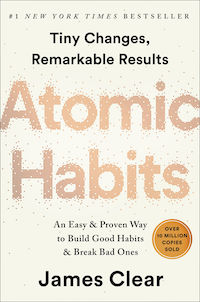Book Notes: Atomic Habits
August 2023

Notes
- Small habits compound over time. Just 1% better will result in 36 times better after one year.
- Visualise as a plane shifting a few degrees, will result in a very different destination
- Positive compounding: productivity, knowledge, relationships
- Negative compounding: stress, negative thoughts, outrage
- There is a critical threshold for habits to appear
- Forget goals (results..can be shortsighted, forced, success or fail), focus on systems (process that leads to results…reliable, long term, commitment)
- Identity-based habits - when offered a cigarette “no thanks, I am trying to quit” vs “no thanks, I am not a smoker”
- Pointing-and-calling raises level of awareness
- Habit scorecard to raise self-awareness
- Implementation intention I will BEHAVIOUR at TIME in LOCATION (specific commitment beforehand)
- Habit stacking and the Diderot Effect - spiral of consumption that leads to additional purchases. Each action becomes a cue that triggers the next behaviour.
- Environment matters. Cues in your environment affect your behaviour.
- Habits can be easier to change in a new environment as it helps you escape the triggers that nudge you toward your current habit.
- Once habits are formed, they are difficult to break. Making it invisible helps, avoiding is better than resisting
- Dopamine is not just pleasure but motivation, learning, memory, punishment, aversion and anticipation.
- “You’re more likely to find a behaviour attractive if you get to do one of your favourite things at the same time” - temptation bundling
- …
- Humans are wired for instant gratifications and inability to think about long term effects of habits. As a result, it is important to build instant gratification into habits to build for a long term goal. E.g. cooking at home instead of eating out and putting aside the saved money for a trip